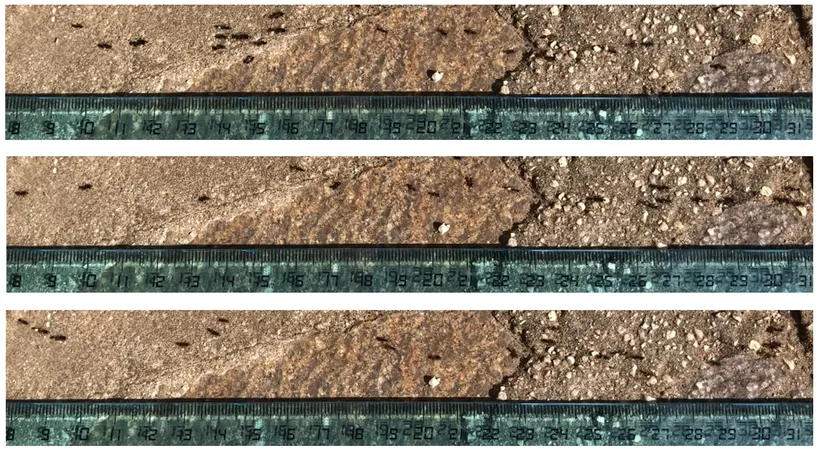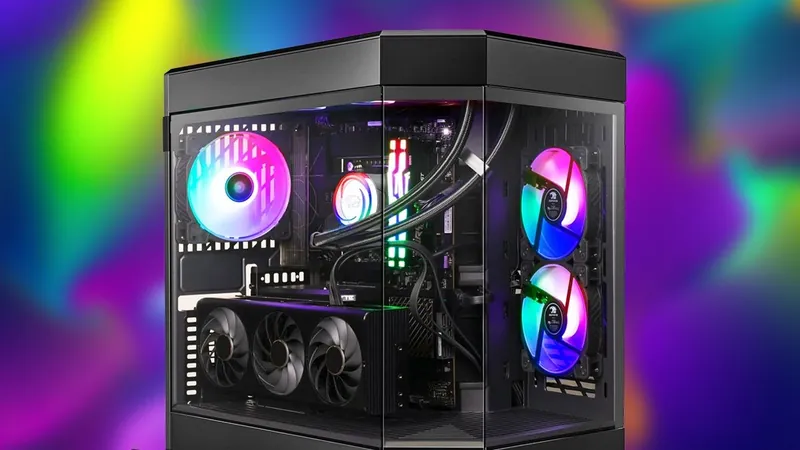
Unlocking the Secrets of Ants: How Their Traffic Strategies Could Revolutionize Urban Transportation
2025-01-18
Author: Siti
Introduction
In a fascinating study that merges nature with technology, researchers are turning to the orderly world of ants to tackle one of the most daunting challenges of modern urban living: traffic congestion. With cities around the globe grappling with increasing vehicle numbers and chaotic traffic patterns, these tiny insects' sophisticated social structures might just hold the key to smoother transportation networks.
Research Overview
Professors Marco Guerrieri and Nicola Pugno from the University of Trento have conducted groundbreaking research into ant behavior, revealing insights that could significantly benefit urban transportation systems. Their findings were documented in a recent publication in Transportation Research Interdisciplinary Perspectives, sparking interest in how biological systems can influence human engineering.
Ant Traffic Management
Ants possess a remarkable ability to manage bidirectional traffic flow, effortlessly navigating their environment without the frustrating stop-and-go disruptions that plague human traffic. Guerrieri, an expert in road and railway infrastructures, emphasized this unique characteristic: "Ants can handle two-way traffic just like our roads yet move seamlessly, demonstrating astonishing efficiency."
Methodology
The researchers meticulously observed a 30-centimeter ant trail—equivalent to 100 times the average ant’s body length—utilizing advanced video recording and deep learning algorithms. By analyzing each ant's movements, they were able to track various metrics such as speed, flow, and density. Their results offer a comprehensive look at how these insects organize their movements to avoid congestion.
Innovative Insights
A key component of ant navigation involves pheromone trails laid down by leading ants, creating a system where individuals follow these chemical signals while maintaining tight formations and avoiding overtaking. Guerrieri points out that this platooning behavior could inspire advancements in human traffic systems, particularly with the integration of autonomous vehicles (CAVs).
Future Implications
"In the not-so-distant future, CAVs could replicate ant communication via pheromones by utilizing state-of-the-art technologies," Guerrieri explains. "They could engage in real-time communication with each other and roadway infrastructure, creating synchronized flows that minimize space between vehicles while maximizing speed and safety." This innovative approach could be key to improving traffic efficiency, enhancing service levels, and notably decreasing environmental impact through reduced emissions.
Conclusion
As urban centers continue to expand and the population density increases, the adoption of strategies inspired by the world of ants may illuminate a path forward in tackling traffic inefficiencies. With the potential for smarter, greener cities on the horizon, the lessons from the humble ant may soon lead to innovative breakthroughs in urban transportation systems. Could ants be the unsung heroes of modern traffic management? Stay tuned as research continues to unfold!




 Brasil (PT)
Brasil (PT)
 Canada (EN)
Canada (EN)
 Chile (ES)
Chile (ES)
 Česko (CS)
Česko (CS)
 대한민국 (KO)
대한민국 (KO)
 España (ES)
España (ES)
 France (FR)
France (FR)
 Hong Kong (EN)
Hong Kong (EN)
 Italia (IT)
Italia (IT)
 日本 (JA)
日本 (JA)
 Magyarország (HU)
Magyarország (HU)
 Norge (NO)
Norge (NO)
 Polska (PL)
Polska (PL)
 Schweiz (DE)
Schweiz (DE)
 Singapore (EN)
Singapore (EN)
 Sverige (SV)
Sverige (SV)
 Suomi (FI)
Suomi (FI)
 Türkiye (TR)
Türkiye (TR)
 الإمارات العربية المتحدة (AR)
الإمارات العربية المتحدة (AR)